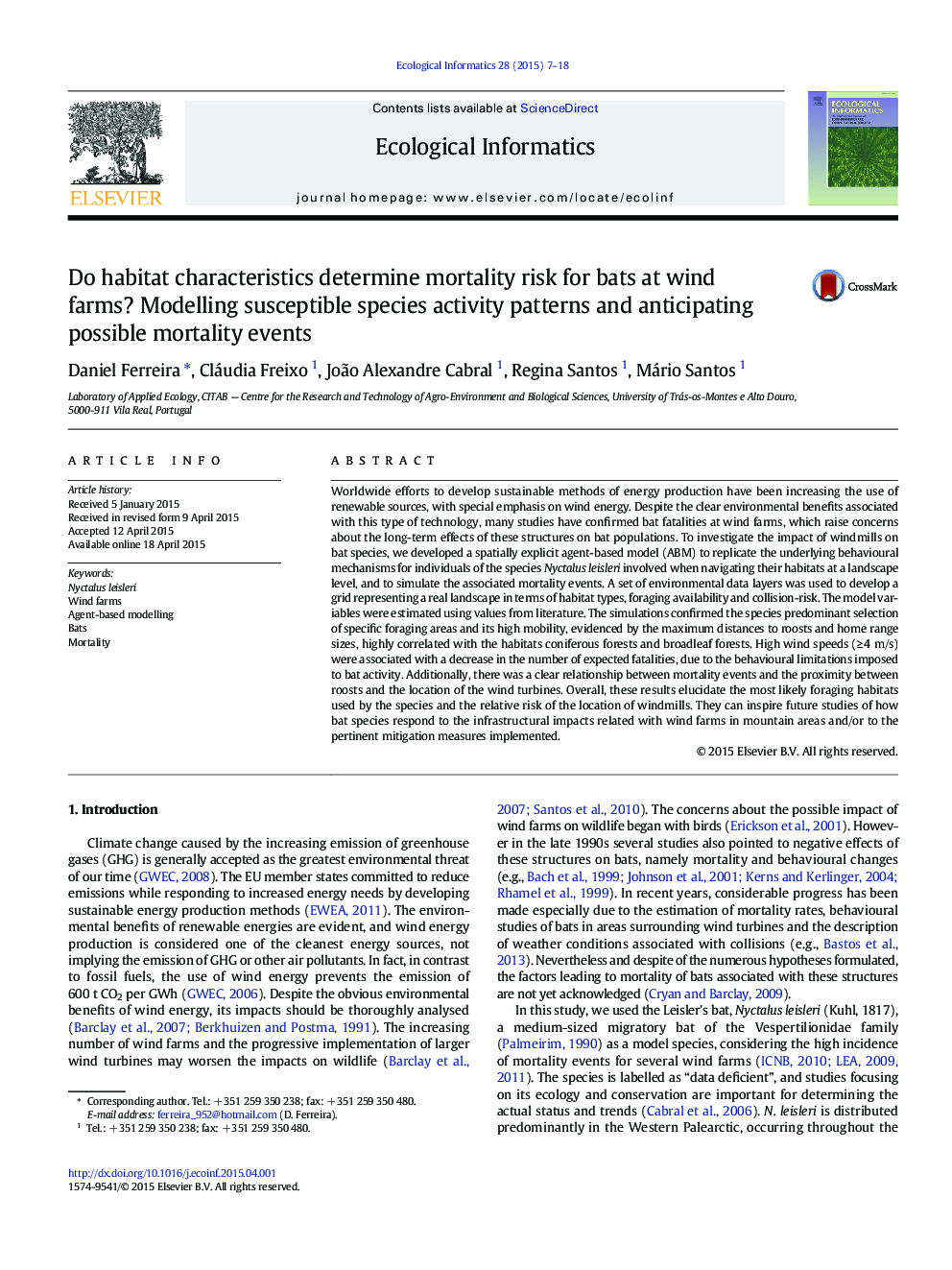| کد مقاله | کد نشریه | سال انتشار | مقاله انگلیسی | نسخه تمام متن |
|---|---|---|---|---|
| 4374813 | 1617205 | 2015 | 12 صفحه PDF | دانلود رایگان |
عنوان انگلیسی مقاله ISI
Do habitat characteristics determine mortality risk for bats at wind farms? Modelling susceptible species activity patterns and anticipating possible mortality events
ترجمه فارسی عنوان
آیا ویژگی های زیستگاه تعیین خطر مرگ و میر برای خفاش در مزارع باد است؟ مدل سازی الگوهای فعالیت های گونه های حساس و پیش بینی وقایع مرگ و میر احتمالی
دانلود مقاله + سفارش ترجمه
دانلود مقاله ISI انگلیسی
رایگان برای ایرانیان
کلمات کلیدی
موضوعات مرتبط
علوم زیستی و بیوفناوری
علوم کشاورزی و بیولوژیک
بوم شناسی، تکامل، رفتار و سامانه شناسی
چکیده انگلیسی
Worldwide efforts to develop sustainable methods of energy production have been increasing the use of renewable sources, with special emphasis on wind energy. Despite the clear environmental benefits associated with this type of technology, many studies have confirmed bat fatalities at wind farms, which raise concerns about the long-term effects of these structures on bat populations. To investigate the impact of windmills on bat species, we developed a spatially explicit agent-based model (ABM) to replicate the underlying behavioural mechanisms for individuals of the species Nyctalus leisleri involved when navigating their habitats at a landscape level, and to simulate the associated mortality events. A set of environmental data layers was used to develop a grid representing a real landscape in terms of habitat types, foraging availability and collision-risk. The model variables were estimated using values from literature. The simulations confirmed the species predominant selection of specific foraging areas and its high mobility, evidenced by the maximum distances to roosts and home range sizes, highly correlated with the habitats coniferous forests and broadleaf forests. High wind speeds (â¥Â 4 m/s) were associated with a decrease in the number of expected fatalities, due to the behavioural limitations imposed to bat activity. Additionally, there was a clear relationship between mortality events and the proximity between roosts and the location of the wind turbines. Overall, these results elucidate the most likely foraging habitats used by the species and the relative risk of the location of windmills. They can inspire future studies of how bat species respond to the infrastructural impacts related with wind farms in mountain areas and/or to the pertinent mitigation measures implemented.
ناشر
Database: Elsevier - ScienceDirect (ساینس دایرکت)
Journal: Ecological Informatics - Volume 28, July 2015, Pages 7-18
Journal: Ecological Informatics - Volume 28, July 2015, Pages 7-18
نویسندگان
Daniel Ferreira, Cláudia Freixo, João Alexandre Cabral, Regina Santos, Mário Santos,
